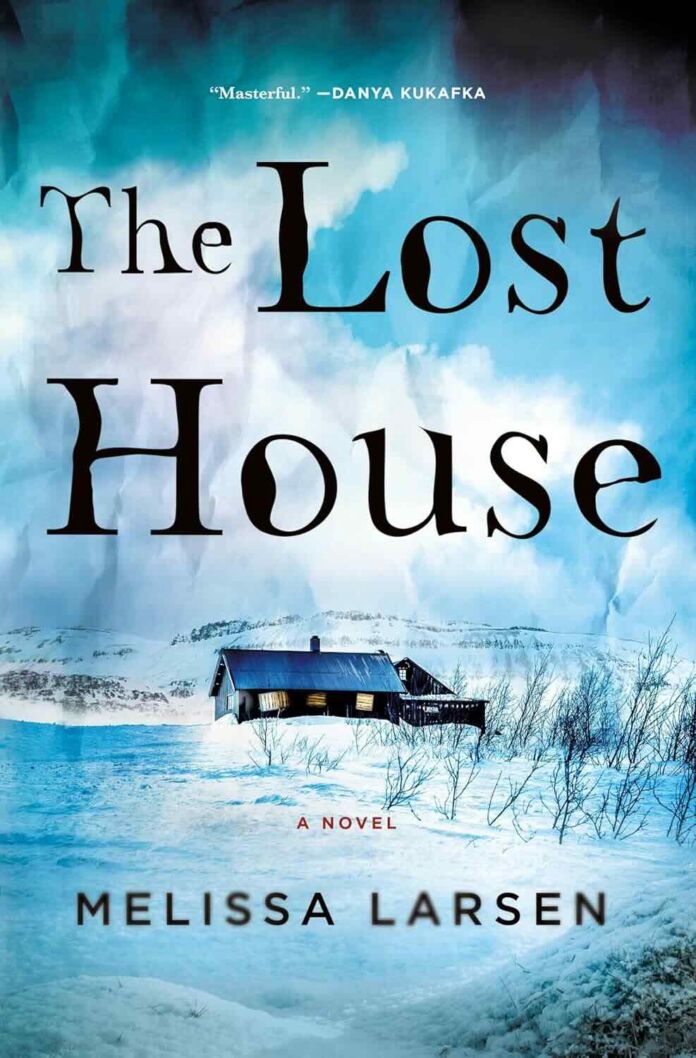In her sophomore novel following Shutter, Melissa Larsen crafts an atmospheric thriller that delves deep into the complexities of family loyalty, trauma, and the weight of unspoken truths. The Lost House by Melissa Larsen takes readers to the remote Icelandic town of Bifröst, where forty-year-old murders collide with present-day disappearances in a narrative that’s as chilling as its setting.
Plot and Structure
The story follows Agnes Glin, a young woman still recovering from both physical and emotional wounds, as she travels to Iceland to participate in true crime podcaster Nora Carver’s investigation into the infamous “Frozen Madonna” case – the unsolved murders of Agnes’s grandmother Marie and infant aunt. What begins as a mission to clear her grandfather’s name becomes increasingly complicated when a university student, Ása, disappears shortly after Agnes’s arrival.
Larsen employs a dual-timeline structure, expertly weaving together:
- Present-day events in Bifröst
- Flashbacks to the 1979 murders
- Personal histories of key characters
Writing Style and Atmosphere
One of the novel’s strongest elements is Larsen’s ability to create a palpable sense of place. The Icelandic winter becomes a character in itself—beautiful, treacherous, and unforgiving. Her prose is crisp and precise, matching the stark landscape she describes. Particularly effective are her descriptions of:
- The physical toll of cold on the body
- The psychological impact of perpetual darkness
- The claustrophobic nature of small-town life
- The way weather can transform familiar places into alien landscapes
Character Development
The character work in The Lost House by Melissa Larsen is generally strong, though some secondary characters could have been more fully developed. Agnes is a compelling protagonist, her physical and emotional vulnerabilities making her both sympathetic and unreliable. Her struggle with pain medication addiction adds another layer of complexity to her character.
Key relationships that stand out:
- Agnes and her father Magnús
- Agnes and Nora
- Agnes and Lilja
- The dynamic between Thor and his son
Thematic Depth
The novel explores several interconnected themes:
- The nature of truth and memory
- Generational trauma
- The impact of secrets on families
- Small-town dynamics and their effect on justice
- The relationship between physical and emotional pain
Strengths
Larsen excels at:
- Creating sustained tension
- Writing believable dialogue
- Depicting the physical and emotional toll of trauma
- Crafting complex female characters
- Building atmospheric dread
Areas for Improvement
While generally successful, the novel has some weaknesses:
- The pacing occasionally lags in the middle sections
- Some plot twists feel telegraphed too early
- Certain character motivations could be better explained
- The romantic subplot feels somewhat underdeveloped
Technical Elements
The author demonstrates skill in handling multiple narrative threads and perspectives. The structure is complex but never confusing, with each timeline adding meaningful layers to the central mystery. The use of weather as both literal obstacle and metaphorical device is particularly effective.
Genre Conventions and Innovation
While The Lost House by Melissa Larsen follows some familiar thriller conventions, Larsen puts her own spin on them through:
- The unique setting
- The integration of true crime podcasting
- The exploration of family dynamics
- The focus on physical disability and chronic pain
Cultural Context
The novel’s portrayal of Iceland feels authentic, avoiding tourist clichés while capturing both the beauty and harshness of the environment. The author’s research into Icelandic culture and social dynamics adds depth to the story.
Comparison to Similar Works
Fans of Tana French’s atmospheric mysteries or Sarah Moss’s Ghost Wall will find similar elements here, though Larsen’s voice is distinctly her own. The novel also shares DNA with Nordic noir classics while bringing a fresh perspective to the genre.
Impact and Resonance
The Lost House by Melissa Larsen succeeds in creating a memorable reading experience that lingers after the final page. The way it handles themes of family loyalty and intergenerational trauma feels particularly relevant to contemporary discussions.
Critical Analysis
The novel’s strengths lie in its:
- Atmospheric writing
- Complex character relationships
- Integration of past and present narratives
- Exploration of trauma and recovery
Its weaknesses include:
- Some predictable plot elements
- Occasional pacing issues
- Underdeveloped secondary characters
Final Verdict
The Lost House is a solid thriller that showcases Melissa Larsen’s growth as a writer since her debut. While not perfect, it offers enough surprises and emotional depth to satisfy both genre fans and readers looking for something more literary.
Recommended for:
- Fans of Nordic noir
- Readers who enjoy cold case mysteries
- Those interested in family dramas
- Anyone who appreciates atmospheric thrillers
- True crime enthusiasts
Reading Experience
Best enjoyed:
- During winter months
- When you have time to immerse yourself in the atmosphere
- With a warm drink nearby
- When you’re in the mood for both mystery and family drama
The Lost House proves that Melissa Larsen is a rising talent in the thriller genre, capable of crafting complex narratives that balance suspense with emotional depth. While there’s room for growth in future works, this sophomore effort demonstrates significant promise and delivers a satisfying reading experience for thriller fans.





